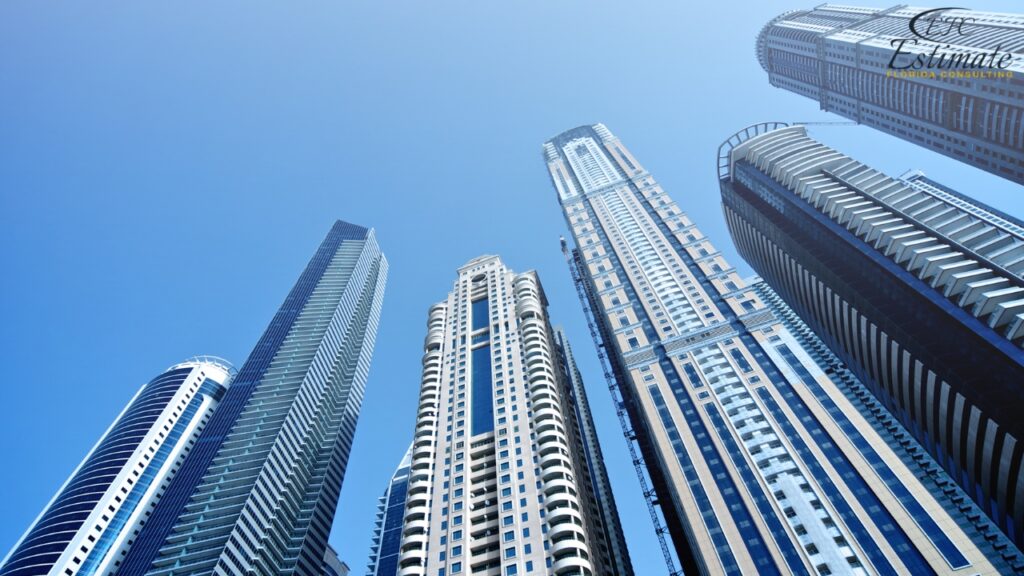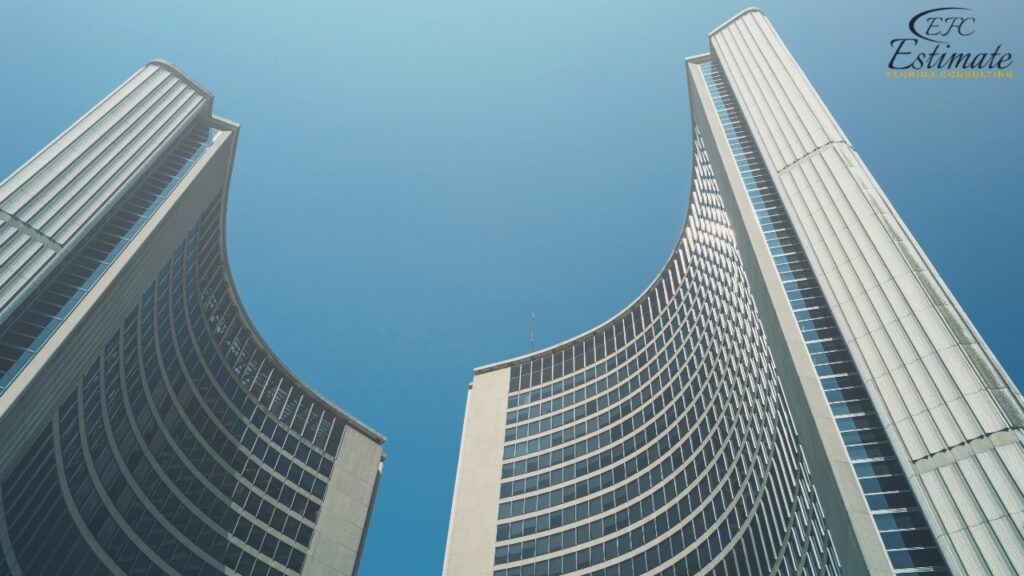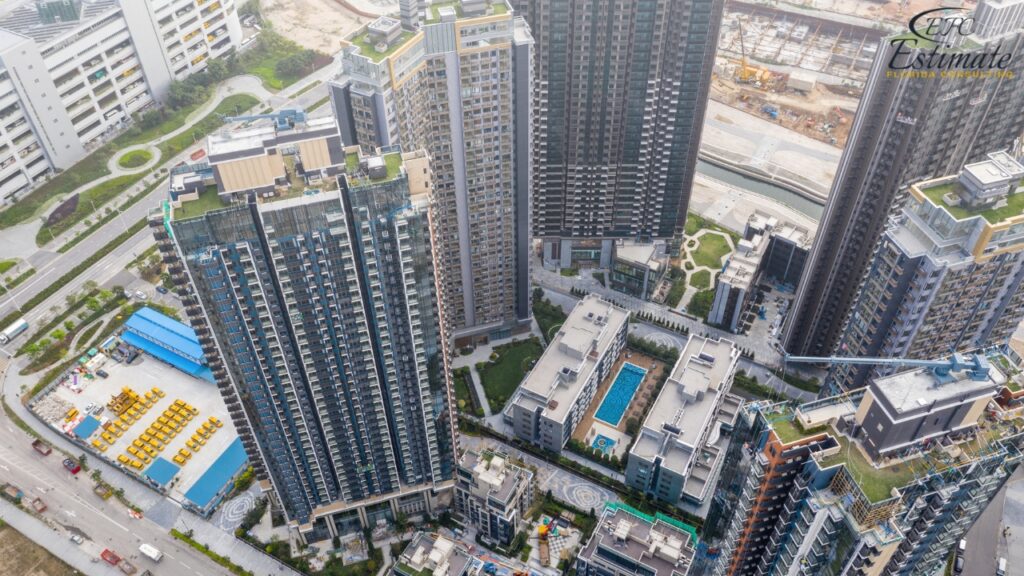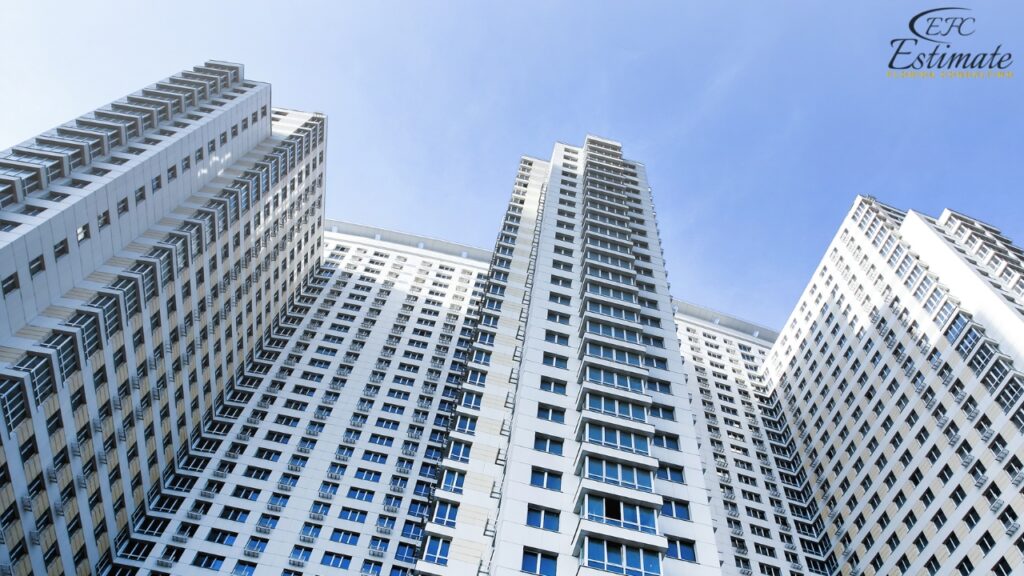Building Estimator
Estimating the cost of building construction is a fundamental step in any construction project. A precise building cost estimate ensures that budgets are set realistically, finances are secured effectively, and the project is completed within the financial constraints. This guide provides a comprehensive overview of the factors that influence building costs and includes a detailed cost estimator to help you plan your project efficiently. Understanding these elements allows stakeholders to make informed decisions, avoid unexpected expenses, and ensure the project proceeds smoothly.

Proper building cost estimation contributes to the structural integrity, safety, and aesthetic appeal of your property, ultimately enhancing its long-term value and functionality.
Factors Influencing Building Costs
Several factors influence the cost of building construction. These include the type of building, materials used, size and complexity of the project, labor costs, location, and additional features such as energy-efficient systems or custom finishes. Understanding these factors helps in estimating the total cost accurately and planning the project efficiently. Each factor plays a crucial role in determining the overall budget, and careful consideration of these aspects can lead to more effective resource allocation and project management. By thoroughly analyzing these elements, project managers can anticipate potential challenges and develop strategies to mitigate them, ensuring a smoother construction process and a higher quality final product.
Type of Building
The type of building significantly impacts the overall cost. Different types of buildings have varying requirements for materials, labor, and design complexity. This variance is due to the specific needs and uses of each building type, as well as the different building codes and regulations that must be adhered to for each category.
The choice of building type significantly impacts construction costs.
Building Type | Cost per Square Foot | Total Cost (for 2,000 sq ft) |
Residential | $196 – $392 | $392,000 – $784,000 |
Commercial | $274 – $548 | $548,000 – $1,096,000 |
Industrial | $392 – $784 | $784,000 – $1,568,000 |
Institutional | $548 – $1,096 | $1,096,000 – $2,192,000 |
- Residential Buildings: $196 – $392 per square foot. Residential buildings include single-family homes, townhouses, and multi-family units. These structures often involve standard construction practices and materials, making them generally less expensive per square foot than commercial or industrial buildings. Residential projects often focus on comfort, aesthetics, and energy efficiency, requiring a balance of cost and quality.
- Commercial Buildings: $274 – $548 per square foot. Commercial buildings such as office spaces, retail stores, and restaurants require more complex designs and higher-grade materials to meet regulatory and functional requirements. These buildings must adhere to strict building codes and standards to ensure safety, accessibility, and functionality for public use, which increases the overall cost.
- Industrial Buildings: $392 – $784 per square foot. Industrial buildings, including warehouses and manufacturing facilities, often require specialized materials and construction techniques to accommodate heavy machinery and large storage areas. These structures must be designed to support heavy loads, withstand harsh environments, and ensure the safety of workers, which contributes to higher costs.
- Institutional Buildings: $548 – $1,096 per square foot. Institutional buildings such as schools, hospitals, and government facilities have stringent requirements for safety, accessibility, and functionality, leading to higher costs. These buildings often require advanced systems for fire safety, HVAC, and accessibility, as well as higher quality finishes to withstand heavy use and provide a safe, comfortable environment for large numbers of people.
Materials Used
The choice of materials greatly influences building costs. High-quality, durable materials may have a higher initial cost but can reduce maintenance expenses and increase the lifespan of the building. Additionally, the selection of materials can impact the energy efficiency, sustainability, and overall aesthetic of the building.
The choice of materials significantly impacts construction costs.

Material Type | Cost per Square Foot | Total Cost (for 2,000 sq ft) |
Standard Materials | $196 – $392 | $392,000 – $784,000 |
Premium Materials | $274 – $548 | $548,000 – $1,096,000 |
Eco-friendly Materials | $392 – $784 | $784,000 – $1,568,000 |
- Standard Materials: $196 – $392 per square foot. Standard materials include basic construction materials such as wood, concrete, and brick. These materials are commonly used in residential construction and provide a balance of cost and durability. While they may require more maintenance over time, they are generally sufficient for most residential projects.
- Premium Materials: $274 – $548 per square foot. Premium materials such as high-grade steel, marble, and specialty glass offer enhanced durability and aesthetic appeal, often used in commercial and luxury residential projects. These materials provide a high-end finish and are designed to withstand wear and tear, reducing long-term maintenance costs and enhancing the overall value of the property.
- Eco-friendly Materials: $392 – $784 per square foot. Eco-friendly materials, including sustainable wood, recycled metal, and green roofing, contribute to energy efficiency and environmental sustainability but can increase initial costs. These materials often require specialized installation techniques and may come with higher upfront costs, but they offer significant long-term benefits in terms of energy savings and environmental impact.
Size and Complexity of the Project
The size and complexity of the project are crucial factors in determining the overall cost. Larger projects require more materials and labor, and complex designs or structural requirements increase costs due to additional engineering and specialized installation techniques. Complexity can also introduce additional risks and uncertainties, which need to be managed carefully to avoid cost overruns.
The size and complexity of the project are critical factors in determining the overall cost.
Project Size | Cost Range |
Small Projects | $392,000 – $784,000 |
Medium Projects | $784,000 – $2,744,000 |
Large Projects | $2,744,000 – $5,488,000+ |
- Small Projects (up to 2,000 sq ft): $392,000 – $784,000. Small projects typically include single-family homes or small commercial spaces. The reduced complexity of these projects generally means fewer unexpected challenges and a quicker completion time. These projects often involve standard construction practices and materials, making them more predictable in terms of cost and schedule.
- Medium Projects (2,000 to 5,000 sq ft): $784,000 – $2,744,000. Medium-sized projects often involve more complex designs and additional structural requirements, requiring more detailed planning and coordination. These projects might include multi-unit residential buildings or mid-sized commercial spaces. The increased complexity can introduce challenges such as integrating new structures with existing ones, requiring more expertise and time.
- Large Projects (5,000+ sq ft): $2,744,000 – $5,488,000+. Large projects such as multi-unit residential buildings or large commercial facilities involve significant planning efforts and coordination among multiple stakeholders. These projects often require extensive regulatory approvals, detailed engineering designs, and meticulous project management. The scale and complexity of large projects can lead to higher costs due to the need for specialized labor and materials, as well as the potential for delays and unforeseen challenges.
Get 5 New Leads Next 7Days With Our System
- Multi-Family Building
- Hotel Building
- Hospital Building
- Warehouse Building
- High-Rise Building
- Shopping Complex
Labor Costs
Labor costs vary based on the complexity of the project and the location. Skilled labor is essential for ensuring quality construction, and wages can differ significantly from one region to another. Investing in skilled labor can prevent costly mistakes and rework, ensuring the project is completed to the highest standards. Additionally, labor costs can be influenced by the availability of skilled workers, local wage rates, and the level of unionization in the area.
Labor costs vary based on the complexity of the installation and the location.
Labor Type | Cost per Hour | Total Cost (for 2,000 hours) |
Unskilled Labor | $49 – $78 | $98,000 – $156,000 |
Skilled Labor | $98 – $147 | $196,000 – $294,000 |
Specialized Labor | $147 – $196 | $294,000 – $392,000 |
Total | $49 – $196 | $588,000 – $842,000 |
- Unskilled Labor: $35 – $56 per hour. Unskilled labor is used for basic tasks such as carrying materials and assisting skilled workers. While these tasks do not require specialized skills, they are essential for supporting the overall installation process. Proper management of unskilled labor can help keep the project on schedule and within budget.
- Skilled Labor: $70 – $105 per hour. Skilled labor is necessary for tasks that require specific expertise, such as framing, plumbing, electrical work, and finishing. Skilled workers ensure that the installation is performed correctly, preventing issues such as structural weaknesses or safety hazards. Their expertise can significantly impact the quality and durability of the construction.
- Specialized Labor: $105 – $140 per hour. Specialized labor includes professionals such as electricians, plumbers, and HVAC technicians who have advanced skills in specific areas of the project. These workers are critical for achieving high-quality finishes and ensuring the structural integrity of the building. Hiring specialized labor can be more expensive but is often necessary for complex or high-stakes projects.
Location
The location of the property affects costs due to variations in labor rates and local regulations. Urban areas typically have higher costs compared to suburban or rural locations. The availability of resources and proximity to suppliers also play a role in determining location-based costs. Understanding the impact of location on costs helps in planning and budgeting more effectively.

- Urban Areas: Higher labor costs and more stringent regulations. Urban construction projects benefit from easy access to amenities and services but come with higher overall expenses. The increased demand for skilled labor and premium materials in urban areas drives up costs. Additionally, urban projects may face more stringent building codes and zoning laws, adding to the complexity and cost. The logistics of working in densely populated areas can also contribute to higher costs.
- Suburban Areas: Moderate costs, balanced access to materials and labor. Suburban areas offer a compromise between cost and convenience, making them a popular choice for many projects. These areas typically have lower regulatory hurdles and labor costs compared to urban centers, making them more cost-effective while still offering good access to suppliers and services. Suburban projects often benefit from a more predictable regulatory environment and easier logistics.
- Rural Areas: Lower costs, but potentially higher transportation expenses for materials. Rural projects can be more cost-effective, but logistical challenges may increase certain expenses. The distance from suppliers and the availability of skilled labor can affect overall project costs, and rural locations may also face unique environmental challenges that need to be addressed. However, the lower cost of land and labor in rural areas can offset some of these additional expenses.
Additional Features
Additional features such as energy-efficient systems, custom finishes, or advanced technology can increase the overall cost of the building project. These features add functionality and aesthetic value but require careful planning and budgeting. While additional features can enhance the performance and appearance of the finished project, they can also significantly increase the complexity and cost of the installation.
Additional features can significantly impact the overall cost of building construction.
Feature | Cost per Unit | Total Cost (for 2,000 sq ft) |
Energy-efficient Systems | $5,600 – $14,000 | $11,200 – $28,000 |
Custom Finishes | $7,000 – $28,000 | $14,000 – $56,000 |
Advanced Technology | $2,800 – $11,200 | $5,600 – $22,400 |
- Energy-efficient Systems: $5,600 – $14,000. Energy-efficient systems such as solar panels, high-efficiency HVAC systems, and LED lighting can reduce long-term operational costs but require a higher initial investment. These systems not only improve the energy performance of the building but also contribute to environmental sustainability and can increase the property’s market value.
- Custom Finishes: $7,000 – $28,000. Custom finishes such as high-end flooring, cabinetry, and fixtures enhance the aesthetic appeal of the building but add to the overall cost. These finishes provide a unique and personalized touch to the building, making it stand out and potentially increasing its market value. Custom finishes often require specialized craftsmanship and materials, which can drive up costs.
- Advanced Technology: $2,800 – $11,200. Advanced technology systems such as smart home automation, security systems, and integrated audio-visual systems provide added convenience and security but require specialized installation and higher costs. These systems enhance the functionality and comfort of the building, offering modern amenities that can attract buyers or tenants. Integrating advanced technology into the building design requires careful planning and coordination to ensure compatibility and efficiency.
Total Estimated Cost
Summarizing all the costs provides a comprehensive view of the total investment required for building construction. This overall estimate allows stakeholders to plan their finances, secure necessary funding, and ensure that the project can proceed without financial interruptions. By understanding the detailed cost breakdown, stakeholders can allocate resources more effectively and make informed decisions to keep the project on track and within budget.

Cost Category | Total Estimated Cost |
Type of Materials | $392,000 – $1,568,000 |
Size and Complexity | $392,000 – $5,488,000+ |
Labor Costs | $588,000 – $842,000 |
Additional Features | $11,200 – $56,000 |
Total | $1,383,200 – $7,954,000+ |
Additional Considerations
Environmental Impact
Sustainable practices and eco-friendly materials can reduce the environmental impact of building construction. Although these choices may come at a higher initial cost, they offer long-term savings through durability and reduced maintenance. Implementing green building certifications can also increase the property’s value and appeal to environmentally conscious buyers. Choosing materials with low environmental impact, utilizing sustainable practices, and opting for eco-friendly finishes are all ways to enhance the sustainability of the project. This approach not only benefits the environment but also contributes to a healthier living or working environment, providing long-term value to property owners and occupants.
Project Management
Effective project management is essential for controlling costs and ensuring timely completion. This includes detailed planning, regular monitoring, and coordination between different teams. Hiring a competent project manager can save money by avoiding delays, reducing waste, and ensuring that all aspects of the project meet the required standards. A project manager also ensures that communication among all stakeholders is clear and efficient, helping to resolve issues quickly and maintain project momentum. Proper project management can prevent costly mistakes and rework, ensuring that the project is completed within budget and on schedule, leading to higher satisfaction for all parties involved.
Contingency Planning
Unexpected issues can arise during building construction, making it essential to include a contingency fund in the budget. This fund covers unforeseen expenses such as delays, design changes, or additional materials. Allocating around 10-15% of the total budget for contingencies can help manage these surprises and keep the project on track. Proper contingency planning ensures that the project can continue smoothly even when unexpected challenges arise, minimizing delays and additional costs. This proactive approach to risk management can save significant time and money in the long run, ensuring a successful project outcome and reducing stress for stakeholders.
Download Template For Building Project Breakdown
- Materials list updated to the zip code
- Fast delivery
- Data base of general contractors and sub-contractors
- Local estimators

Conclusion
Estimating building construction costs accurately is vital for the success of any construction or renovation project. By understanding the various factors that influence costs and using a detailed cost estimator, you can plan your project effectively and ensure it stays within budget. Whether you are undertaking a residential, commercial, or industrial project, careful planning and budgeting are key to achieving high-quality, timely, and cost-effective results. Investing in skilled professionals, quality materials, and effective project management will help you achieve a successful and sustainable building construction. The effort put into pre-construction planning lays a strong foundation for the entire project, leading to better outcomes and greater satisfaction for all stakeholders.
FAQs
A building estimator is a professional or a tool used to estimate the total cost of a building construction project. This includes calculating the expenses for materials, labor, equipment, and any other costs associated with the project.
Accurate building cost estimation is crucial for setting realistic budgets, securing financing, and ensuring the project stays within financial constraints. It helps in making informed decisions, avoiding unexpected expenses, and ensuring the project proceeds smoothly.
Several factors influence building construction costs, including:
- Type of Building: Residential, commercial, industrial, and institutional buildings have different cost structures.
- Materials Used: The choice between standard, premium, and eco-friendly materials impacts costs.
- Size and Complexity: Larger and more complex projects require more resources and time.
- Labor Costs: Skilled and specialized labor can significantly affect the overall cost.
- Location: Urban, suburban, and rural locations have varying costs due to labor rates and regulations.
- Additional Features: Energy-efficient systems, custom finishes, and advanced technology can increase costs.
Different types of buildings have unique requirements for materials, labor, and design complexity. For example:
- Residential Buildings: $196 – $392 per square foot
- Commercial Buildings: $274 – $548 per square foot
- Industrial Buildings: $392 – $784 per square foot
- Institutional Buildings: $548 – $1,096 per square foot
The choice of materials affects the initial cost and long-term maintenance of the building. Categories include:
- Standard Materials: $196 – $392 per square foot
- Premium Materials: $274 – $548 per square foot
- Eco-friendly Materials: $392 – $784 per square foot
The size and complexity of a project dictate the amount of materials, labor, and time required. Costs can be categorized as:
- Small Projects (up to 2,000 sq ft): $392,000 – $784,000
- Medium Projects (2,000 to 5,000 sq ft): $784,000 – $2,744,000
- Large Projects (5,000+ sq ft): $2,744,000 – $5,488,000+
Labor costs vary based on the skill level required and the project’s location:
- Unskilled Labor: $49 – $78 per hour
- Skilled Labor: $98 – $147 per hour
- Specialized Labor: $147 – $196 per hour
Location influences labor rates, material availability, and regulatory requirements. Costs vary for:
- Urban Areas: Higher costs due to labor demand and stringent regulations.
- Suburban Areas: Moderate costs with balanced access to materials and labor.
- Rural Areas: Lower costs but potentially higher transportation expenses for materials.
Additional features such as energy-efficient systems, custom finishes, and advanced technology add to the cost but enhance functionality and value:
- Energy-efficient Systems: $5,600 – $14,000
- Custom Finishes: $7,000 – $28,000
- Advanced Technology: $2,800 – $11,200
The total estimated cost depends on various factors:
- Type of Materials: $392,000 – $1,568,000
- Size and Complexity: $392,000 – $5,488,000+
- Labor Costs: $588,000 – $842,000
- Additional Features: $11,200 – $56,000
- Total: $1,383,200 – $7,954,000+
- Environmental Impact: Using sustainable practices and eco-friendly materials can reduce long-term costs and environmental footprint.
- Project Management: Effective project management ensures cost control, timely completion, and high-quality results.
- Contingency Planning: Including a contingency fund (10-15% of the budget) helps manage unexpected expenses.
Google Reviews



Process To Get Building Estimate Report
Here I am going to share some steps to get building estimate report.
-
You need to send your plan to us.
You can send us your plan on info@estimatorflorida.com
-
You receive a quote for your project.
Before starting your project, we send you a quote for your service. That quote will have detailed information about your project. Here you will get information about the size, difficulty, complexity and bid date when determining pricing.
-
Get Estimate Report
Our team will takeoff and estimate your project. When we deliver you’ll receive a PDF and an Excel file of your estimate. We can also offer construction lead generation services for the jobs you’d like to pursue further.

